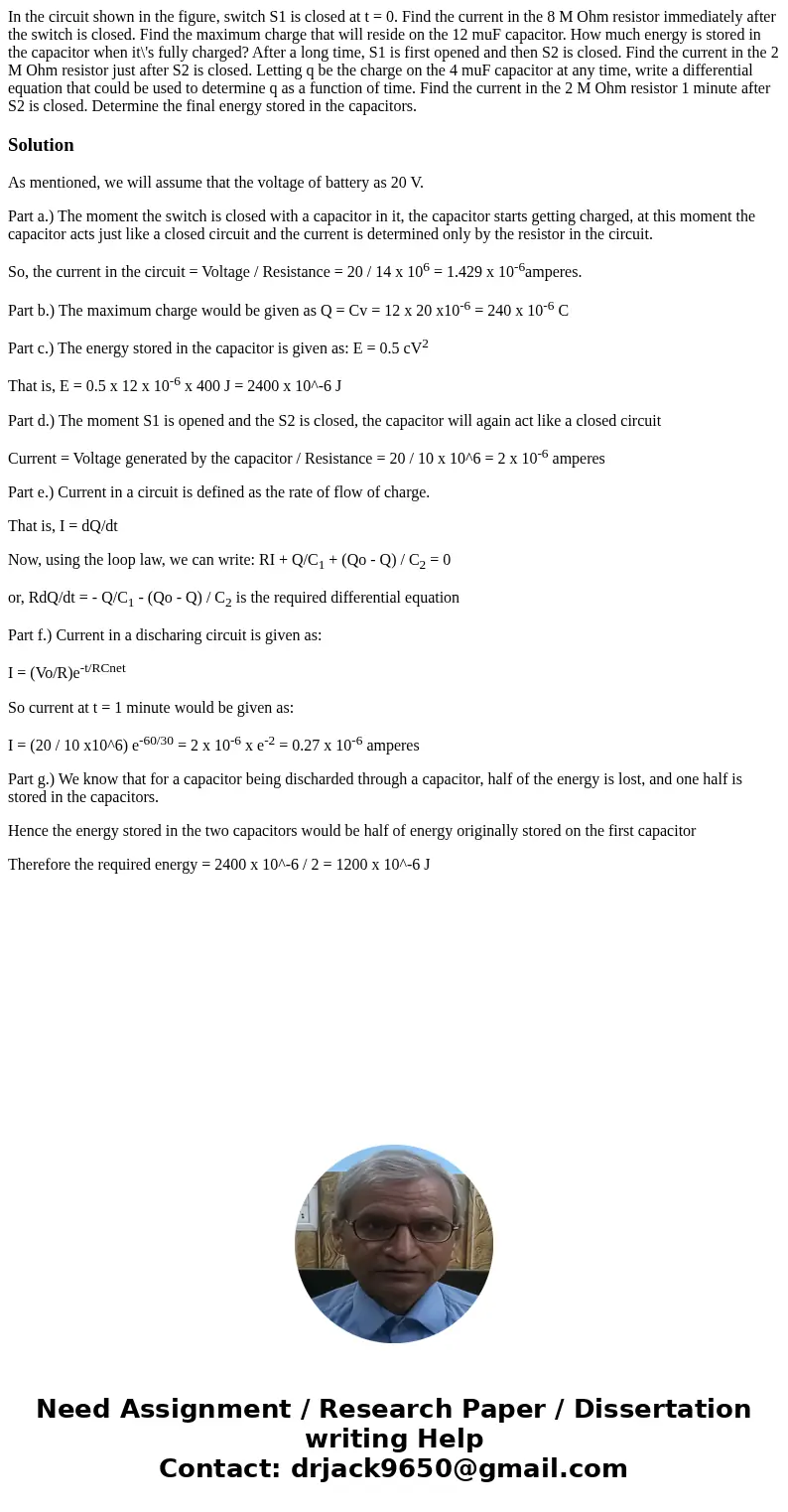In the circuit shown in the figure switch S1 is closed at t
Solution
As mentioned, we will assume that the voltage of battery as 20 V.
Part a.) The moment the switch is closed with a capacitor in it, the capacitor starts getting charged, at this moment the capacitor acts just like a closed circuit and the current is determined only by the resistor in the circuit.
So, the current in the circuit = Voltage / Resistance = 20 / 14 x 106 = 1.429 x 10-6amperes.
Part b.) The maximum charge would be given as Q = Cv = 12 x 20 x10-6 = 240 x 10-6 C
Part c.) The energy stored in the capacitor is given as: E = 0.5 cV2
That is, E = 0.5 x 12 x 10-6 x 400 J = 2400 x 10^-6 J
Part d.) The moment S1 is opened and the S2 is closed, the capacitor will again act like a closed circuit
Current = Voltage generated by the capacitor / Resistance = 20 / 10 x 10^6 = 2 x 10-6 amperes
Part e.) Current in a circuit is defined as the rate of flow of charge.
That is, I = dQ/dt
Now, using the loop law, we can write: RI + Q/C1 + (Qo - Q) / C2 = 0
or, RdQ/dt = - Q/C1 - (Qo - Q) / C2 is the required differential equation
Part f.) Current in a discharing circuit is given as:
I = (Vo/R)e-t/RCnet
So current at t = 1 minute would be given as:
I = (20 / 10 x10^6) e-60/30 = 2 x 10-6 x e-2 = 0.27 x 10-6 amperes
Part g.) We know that for a capacitor being discharded through a capacitor, half of the energy is lost, and one half is stored in the capacitors.
Hence the energy stored in the two capacitors would be half of energy originally stored on the first capacitor
Therefore the required energy = 2400 x 10^-6 / 2 = 1200 x 10^-6 J

 Homework Sourse
Homework Sourse